If you have any interest in shrines and temples, then it is likely you have heard about the Meiji Shrine. Meiji Shrine is one of the most famous shrines in Japan as it is dedicated to the divine souls of the late Emperor Meiji and his wife, Empress Shoken. The Meiji Shrine is found in Shibuya, Tokyo, which is a very popular tourist destination. Shibuya is known for the swarms of people who use the large crosswalk every time the light changes. This rush of people is nicknamed the Shibuya Shuffle. Visiting the Meiji Shrine is a great way to escape the modern city life of Shibuya without leaving the city itself.
The original Meiji Shrine, completed in 1921, was destroyed during the Tokyo air raids of World War II. However, thanks to fund raising by the public, the shrine was able to be rebuilt in 1958. The shrine has since been visited by many important U.S. politicians, such as George W. Bush and Hillary Clinton.
The late Emperor Meiji ascended to the throne in 1867 as the 122nd emperor of Japan. Emperor Meiji is revered as one of the greatest Emperors to ever rule in Japan and is famous for his initiatives to promote friendship and unity with other countries. Emperor Meiji also made history with his efforts to introduce Western methods of technology and civilization, which shaped Japan into the country that it is today.
The wife of Emperor Meiji, Empress Shoken, acted as a support system to her husband, but also achieved several great accomplishments herself. Empress Shoken devoted a great deal of her time to promoting national welfare and women’s education. Empress Shoken was definitely ahead of her time and is thought of as a role model for the “perfect woman” to Japanese women. Empress Shoken also donated a large sum of funds to the International Red Cross and the funds have been used for international welfare even up to this day.
The Emperor Meiji and Empress Shoken were truly passionate, dedicated rulers and their ideals and beliefs are shown through the thousands of waka poems they composed over their lifetimes. Waka poetry is a traditional Japanese poem style consisting of 31 syllables. Within their life span, Emperor Meiji composed around 100,000 waka and Empress Shoken composed close to 30,000. The poems consist of themes such as their feelings towards their country, the world, the Japanese people, and their personal ethics and morals. When visiting the Meiji Shrine, visitors may purchase an omikuji that features one of twenty waka written by the Emperor and Empress.
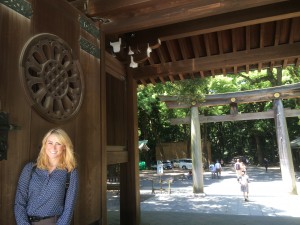 The Meiji Shrine lies within a large forest of 170 acres, which consists of 120,000 trees of 365 different species, which were donated from areas all over Japan, therefore containing every specie of tree that exists in Japan. The only portion of the property that existed before the Meiji Shrine was created is the Inner Garden, or Gyoen. This garden was designed by Emperor Meiji as a gift for Empress Shoken so that she would have a place to gain fresh energy. Currently, the property is divided into two sections, the Naien and Gaien. The Naien consists of the shrine itself as well as a museum that holds many treasures that belonged to the Emperor and Empress. The Gaien is all of the surrounding area, which contains the forestry, the Meiji Memorial Picture Gallery, the National Stadium, and the Meiji Memorial Hall. The Meiji Memorial Picture Gallery is a collection of 80 large murals which share the story of the Emperor and Empress’ lives. The National Stadium used to be the Meiji Jingu Gaien Stadium but was demolished to build the Tokyo Olympic Stadium in 1956. The Meiji Memorial Hall was created to hold government meetings but now is used as a wedding venue for couples who practice the Shinto religion.
The Meiji Shrine lies within a large forest of 170 acres, which consists of 120,000 trees of 365 different species, which were donated from areas all over Japan, therefore containing every specie of tree that exists in Japan. The only portion of the property that existed before the Meiji Shrine was created is the Inner Garden, or Gyoen. This garden was designed by Emperor Meiji as a gift for Empress Shoken so that she would have a place to gain fresh energy. Currently, the property is divided into two sections, the Naien and Gaien. The Naien consists of the shrine itself as well as a museum that holds many treasures that belonged to the Emperor and Empress. The Gaien is all of the surrounding area, which contains the forestry, the Meiji Memorial Picture Gallery, the National Stadium, and the Meiji Memorial Hall. The Meiji Memorial Picture Gallery is a collection of 80 large murals which share the story of the Emperor and Empress’ lives. The National Stadium used to be the Meiji Jingu Gaien Stadium but was demolished to build the Tokyo Olympic Stadium in 1956. The Meiji Memorial Hall was created to hold government meetings but now is used as a wedding venue for couples who practice the Shinto religion.
Along the path to the shrine there is a large wall made of sake drums. These sake drums were donated to the shrine in honor of the Emperor Meiji because he helped to advance the industry. Some people who visit the shrine pray for the sake businesses to continue to succeed so that they may continue to donate their sake to the shrine.
Walking through the grounds of the Meiji Shrine truly makes you feel like you have been transported elsewhere. The smell of the trees puts you at peace and brings serenity to your busy city life. Being one of the most famous shrines in Japan, and enshrining some of the most important figures in Japanese history, the Meiji Shrine is a must-see stop for all foreigners.
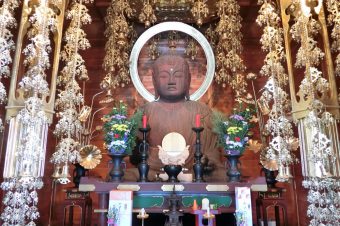

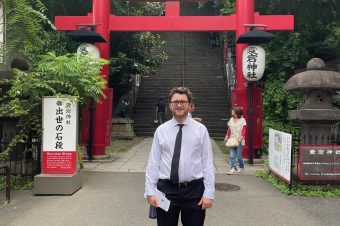
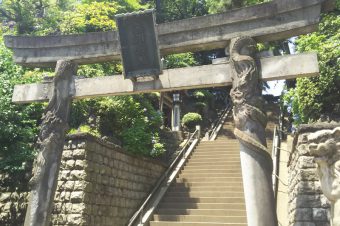
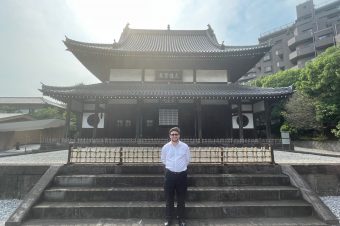
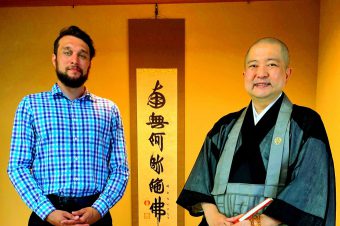
2 Responses
Jason
I am sure this post has touched all the internet visitors, its really really good piece of writing on building up new blog.
Revered Animals at Japan’s Temples & Shrines – Sanpai Japan
[…] you think of temples and shrines in Japan, you might imagine Senso-ji Temple in Asakusa or Meiji Shrine in Harajuku, both famous sightseeing spots in Tokyo. However, there are many more shrines and […]